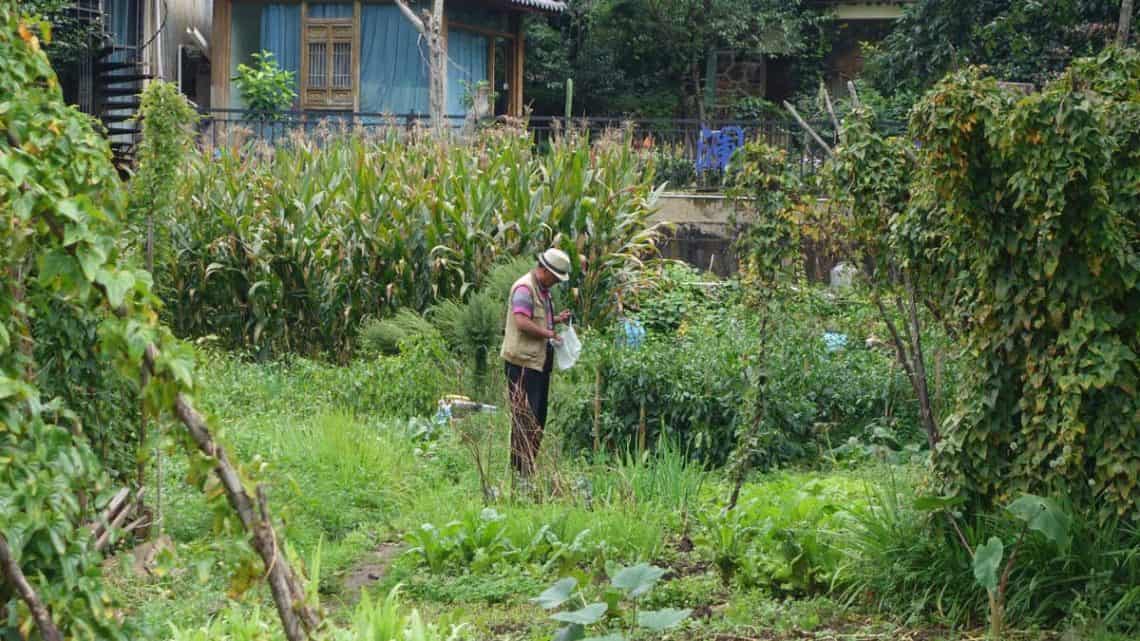Given my focus on “Red Hot China,” the search for insight into the chilli’s importance in this fascinating country, even a sojourn in a tourist spot went a bit different.
In Lijiang, I noticed the little ‘guerilla gardening’ of chilli and vegetables on the side of much-visited old town paths.
In Shuhe Old Town, there were outright vegetable patches within the bounds of the site.
It was funny. At first, I wasn’t even sure I wanted to go into this old town. Having to pay an entrance fee did not make it the most attractive.
Then, I went around (having paid) and found this to be a very nice place. And while on my way around some of the temples (another fascination of mine), there was that tiny dirt path branching off through trees.
It caught my attention; it looked enticing to me – and having followed it past the nearby trees, it turned out to lead straight onto vegetable plots of town residents!
There I was, looking around at all the green. Finding a woman who was planting some carrots, I said hello. I pointed out what I recognized, she answered my questions on what I didn’t – and there was a lot.

They were growing maize, yams, taro, the usual diversity of leafy cabbage greens (cabbage, baicai/pak choi, even broccoli), eggplant, the various kinds of alliums one finds in China (leeks, garlic, garlic leeks), and so much more.
In the middle of all those vegetables, in many a patch: chilli.

Not just any chilli, but many a chilli. (Excuse me, I can’t resist silly word plays.)
Some patches just had one type of chilli, longer Cayenne-types as they are popular green in a lot of the cooking or red, and then also dried.

Some patches showed a bit more variety, quite typical for landraces or chilli otherwise not grown from commercial seed but via seed saving.
One patch, close by the plastered path outside, held my fascination for a while.
There was some of the round, more vegetable-like but not without pungency, cai jiao (like a tomato pepper). Cayenne-type chilli. Smaller ones growing more or less as a chaotianjiao (“facing heaven chilli”).
All that, as I said, close to a path outside, just a small wooden fence separating it… meaning that Chinese tourists were walking past on their way to the temples I had also been walking towards. And then they got rather sidetracked, at least for a few steps and some comments – and sometimes, striking up a bit of a conversation – by this foreigner standing in the vegetable patches.
Curious feeling, becoming the curiosity.

It happens quite a bit in China, though – and when it happens about vegetable growing and food, my fascination has so far always been appreciated. Vegetable garden growing and eating fresh from the soil (although, Chinese would want everything washed), it connects us well!











Leave a Reply
You must be logged in to post a comment.